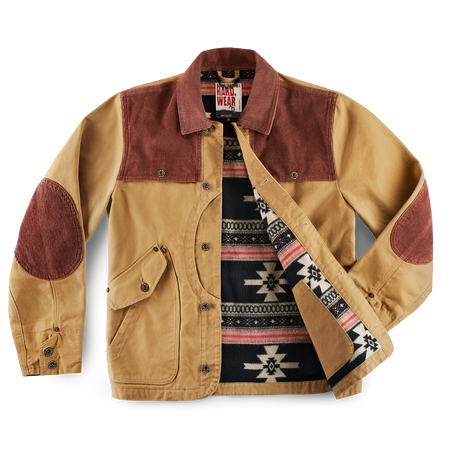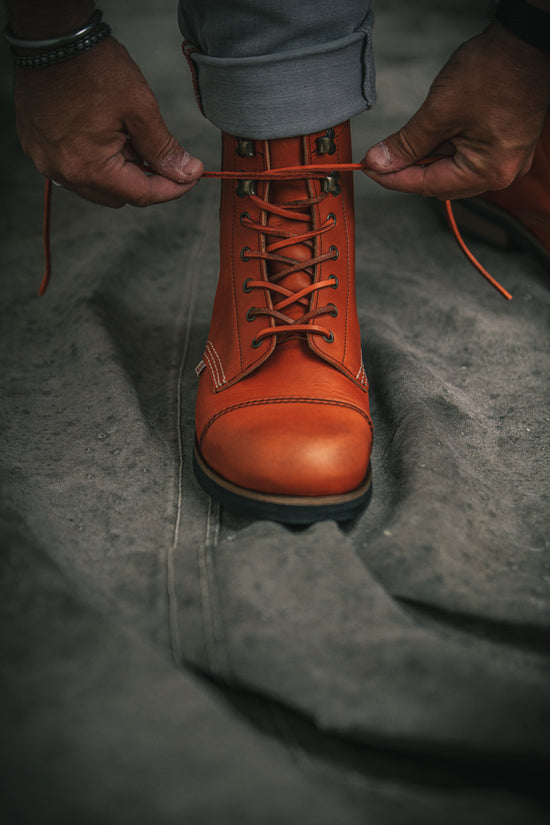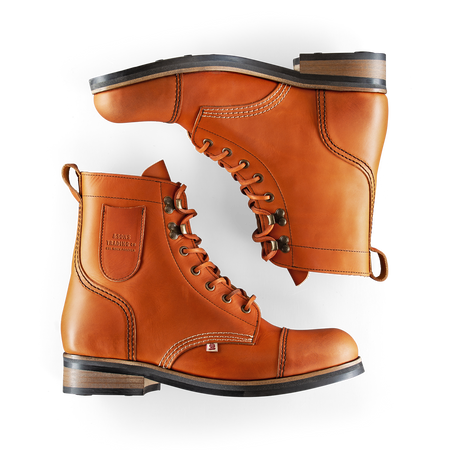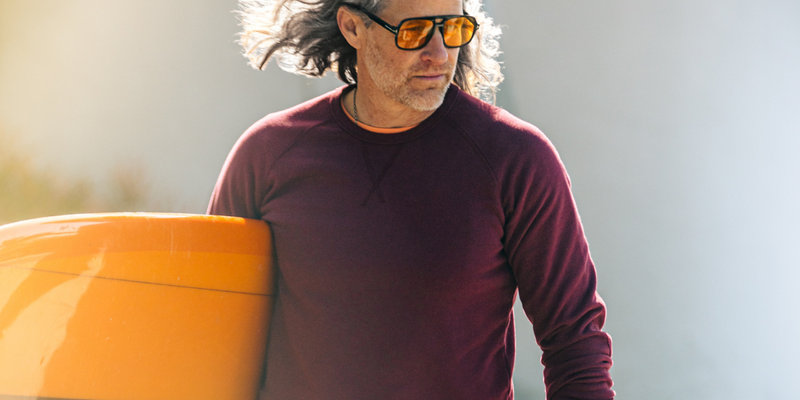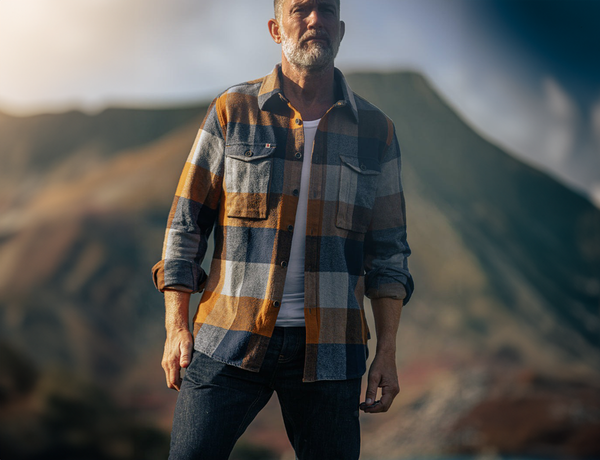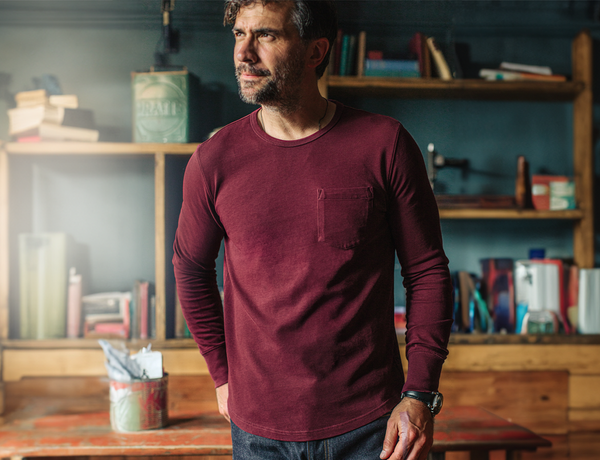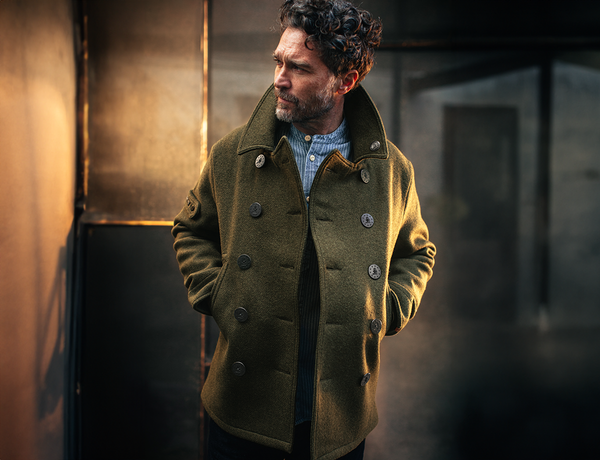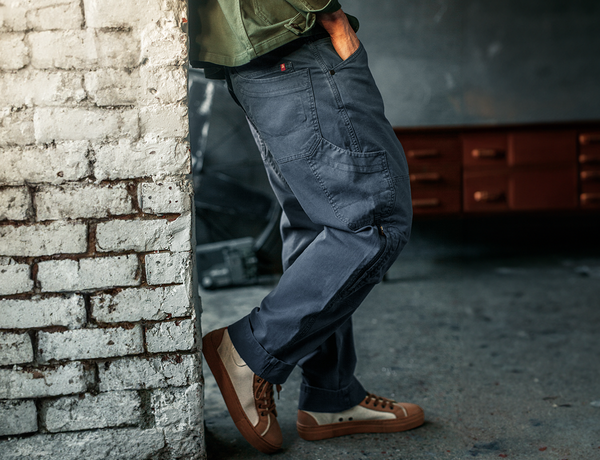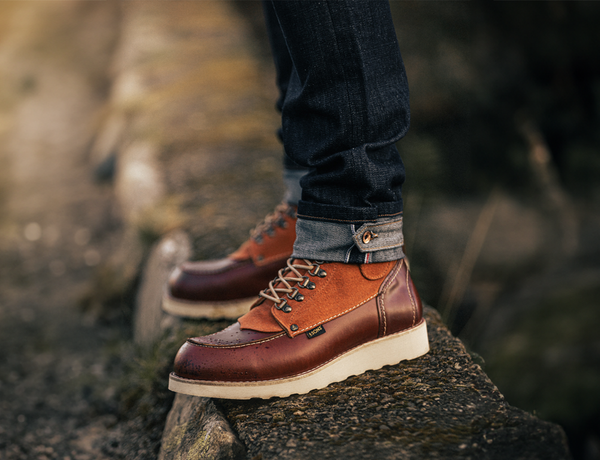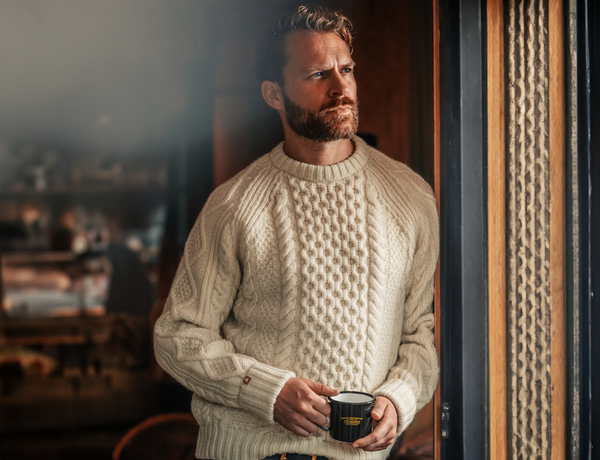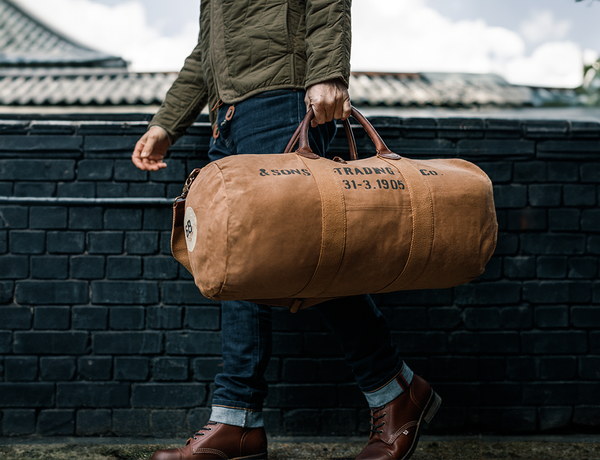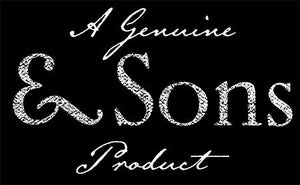April 25
Meet Charlie Hamilton James: The Story Behind the Lens of a National Geographic Photographer
Can you start by introducing yourself and your profession?
My name's Charlie Hamilton James and I'm a photojournalist and a filmmaker.
You’ve been selected as a pioneer for &SONS. What’s your definition of a pioneer?
A pioneer, to me, is someone who pushes the boundaries of what everyone else is doing. It’s someone who steps one foot forward, who puts their neck on the block and tries to push a boundary.
Is photography a family thing for you, or was it something you chose to do?
I've been a photographer since I wasn't one if that makes sense. I picked up my first camera when I was 12, but I didn’t go professional until I was in my 30s. It was a natural step for me, trying to capture the world around me. I guess it must be slightly rooted in my grandparents.
They were pioneers of a process called dye transfer retouching in the 1940s and 50s. They’d take black and white photos and paint them into colour so well you couldn’t tell they weren’t originally shot in colour.
They did an incredible version of the famous Karsh picture of Winston Churchill - the one where Karsh whipped the cigar out of Churchill’s mouth to get that angry expression. That photo’s on the £5 note now. But at home, I have a colour version my grandmother made from the original black and white.
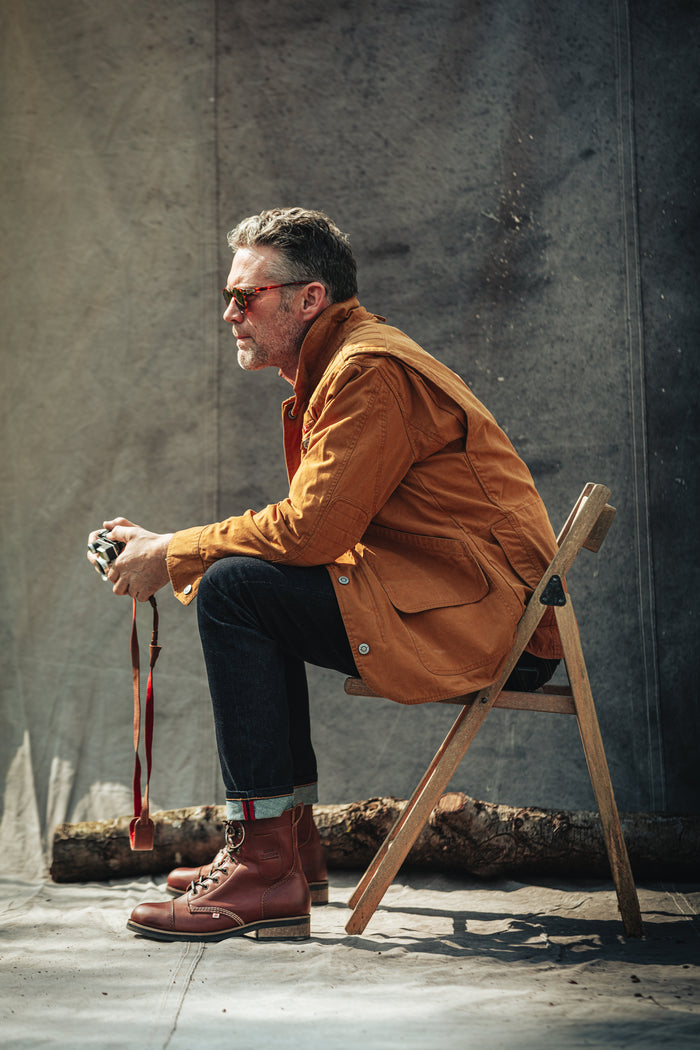
How did it all begin? What got you to where you are today?
I started taking pictures because I was obsessed with kingfishers. From age seven, I have no idea why, but I was totally obsessed. By the time I was 11 or 12, I realised I needed to channel that obsession into something. I couldn’t just keep watching them, drawing them, and reading about them. So I started taking pictures. That, combined with an early childhood of reading National Geographic magazines, planted the idea in my head that I wanted to be a photographer. It took a long time though, I actually became a filmmaker first.
Has your latest work been an evolution? Have you always been curious about the darker side of nature, or is that something that developed?
My latest work really comes from frustration. It’s a series of very powerful, almost baseball-bat to the face images dealing with what I call 'end times'. The gradual destruction of ecosystems we’re living through. After 20 years of photographing the destruction of the planet, mainly for National Geographic, lots of death, lots of destruction, it was really getting to me. I decided to strike out and make images that would stop people’s thumbs as they scrolled through Instagram. I wanted to create something stark, obvious, and arresting.
What values do you cherish most in your work?
I’m a journalist, so everything for me is about integrity. I was never trained as a journalist and didn’t originally aspire to be one, I just ended up here. I used to be a documentary filmmaker, and documentary filmmaking often isn’t about integrity in the strictest sense; it’s about telling a story. But now, working for a news organisation and a magazine that requires 100% clarity and transparency, where fact is everything, I have to present the truth as closely as I can find it. That’s what I live by now.
What does your work consist of? How do you spend your time?
I’m a photojournalist, mainly working on conservation stories. That’s my thing. I travel a lot, mostly in Africa and South America, covering issues around the natural world. I've done a lot of the heavy stuff over the years, what I call ‘misery stories’, things like species decline, animal poaching, and habitat loss. And I’ve tried to move away from it because it’s relentless, but it has a habit of pulling you back in.
Most of my work is for National Geographic Magazine. It’s where my career’s been anchored really. And while it’s incredible, it’s tough. These are big, global stories and they matter, but it does get to you. You don’t realise it at the time, because you’re in work mode, but it bottles up.
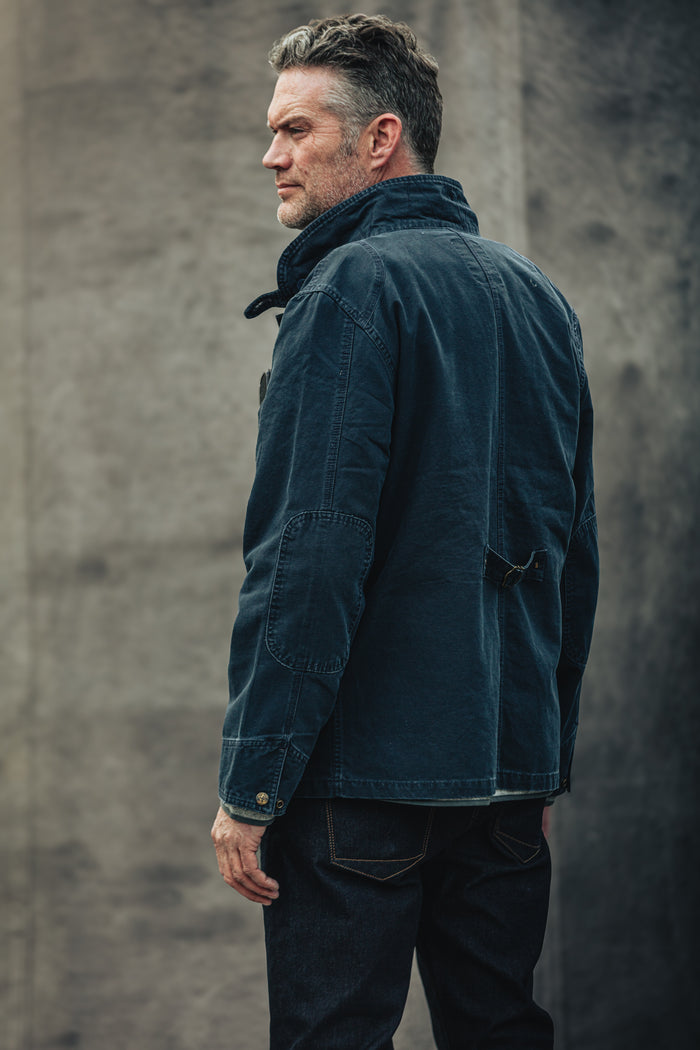
Has there been one project that’s really stuck with you?
Last year in Kenya was a tough one. I was covering the drought in East Africa. It was absolutely brutal. I was driving around Amboseli National Park and it was like a war zone. Dead animals everywhere- wildebeest, zebras, giraffes, elephants. You name it. Just heartbreaking. When you’re working, you’re just doing your job, you know? You don’t think about it too much because you’ve got a job to do. But it builds up, and eventually, it gets in your head. I think anyone working in frontline conservation photography probably carries a bit of that around with them.
Do you find being out in nature helps with that? A way to decompress a bit?
Massively. The power of being outside is totally underrated. I think we all knew it as kids. We were always out running about, climbing trees, building dens, and for some reason as adults we forget to do it. But it’s essential.
There’s nothing better than just being out in the wild, no phone signal, no noise. It clears your head. It’s where I feel most normal. And when I’m not on assignment, I make a point of doing that. Even if it’s just a weekend somewhere quiet, it makes a huge difference.
Can you tell us a bit more about your creative process?
It never turns off, it’s exhausting. Once I’ve got something in my head, I just can’t let go of it if it’s a concept. If I get an idea, I’ll trawl the internet, look at everything that’s ever been done on the subject, and then think about how I can do it differently and better. How can I apply an emotional element to this subject that maybe hasn’t been done before? I’m constantly trying to do things no one else has done. I have to keep reinventing how everything’s seen or covered because that’s what keeps me in work. But at the same time, I have absolutely crippling imposter syndrome.
I’ve got no confidence in my process while I’m actively doing it. I can plan a shoot in advance, but the moment I get there with my camera, I think I’m a terrible photographer, especially if another photographer is with me. I know now, objectively, I’m good, but I don’t feel like it. It’s this endless battle between one part of my brain and the other.
What inspires you? What sparks those ideas?
I get really excited when I come up with something totally new, a unique concept. That’s when I start figuring out how to make it happen. How do those ideas come about? I don’t really know. I think if you think about something enough, it eventually comes to you. Like yesterday, I had a complete eureka moment. I’m working on a series of images at the moment, and they’re really hard to come up with. But suddenly… it just arrived and that's so exciting. To me, that's the best part of the job. I'm not a process guy, although I enjoy taking the picture, I much prefer having taken the picture and looking at it. That's where I'm at my happiest.
Three words that best describe you...
Lazy, guilty, and creative. I say guilty because I’m always guilty about being lazy, even though objectively I’m not, I live in a perpetual state of guilt about it. I think it comes from being creative, I constantly feel like an imposter.I know I’m good at my job, but I still think I’m terrible at it. I’ve got no confidence while I’m actively doing it.
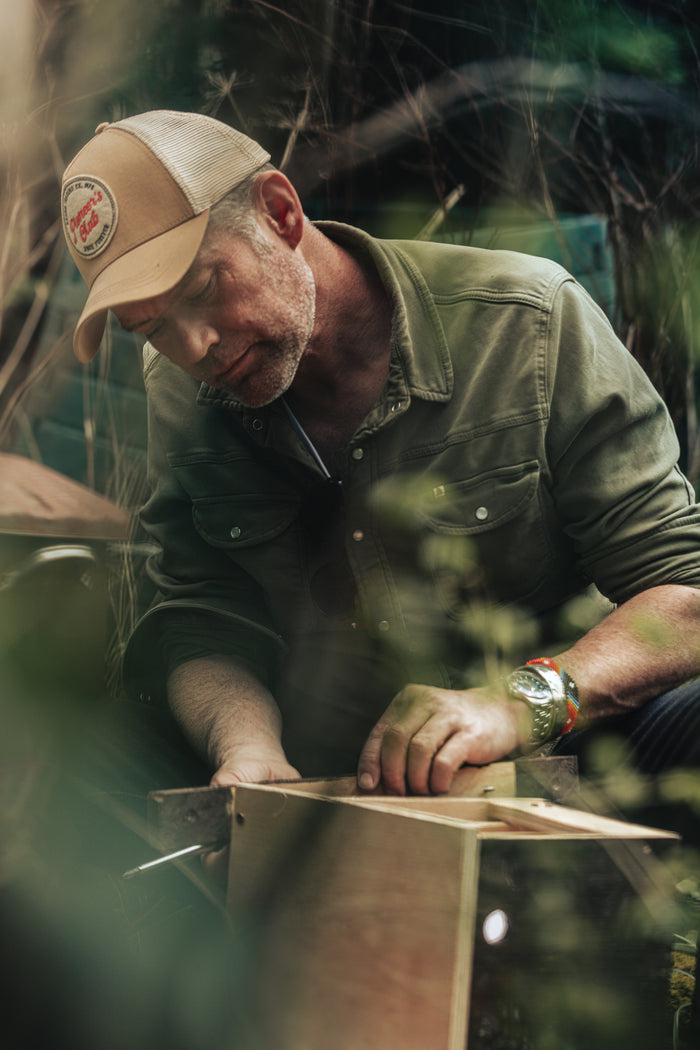
How would you describe your style?
I’ve actually got a name for my style - Mandrover. It’s this mix of quality and simplicity. I’m not into over-detailed clothes or big logos plastered all over the place. I care about the make, the fabric, those small, considered details, like a good pearl button or how a collar sits. That’s what matters to me.
I think a lot of it comes from my dad, to be honest. He was always about quality- not flashy, just well-made stuff that lasts. And then I spent years living in Wyoming, up in the Rocky Mountains, so there’s a bit of that cowboy, outdoors vibe in there too. It’s a mix of classic workwear and something a bit rugged, but simple.Honestly, once I find something I love, I just stick with it.
Like this shirt I’m wearing now - I’ve worn it more than any other shirt I’ve owned. I’ve actually got two of them because I know what I’m like. I remember being in Vegas once, finding a shirt I liked, and buying three of them on the spot so I wouldn’t have to go hunting for something else later. I’m not interested in endlessly shopping. I just want good stuff I can rely on.
Is music a big thing for you, or are there one or two artists that you stick with?
No, I love music. Always have. I like loads of different stuff. I still go to festivals in the summer. I know I'm too old, but I don't care. I'm still dancing.
If I'm hanging about at home or in the car, it's usually Gregory Alan Isakov. He's been my favourite for years now. It's the kind of music that suits where my head is at most of the time. If I'm working, especially if I’m editing pictures or writing, I can’t deal with lyrics getting in the way. But I need noise. I can’t have silence. So I’ll put Gregory on in the background, and it just keeps everything ticking over. It’s mellow but meaningful, you know? It’s like having a good mate sat in the room not saying much, just being there.
What about Podcasts?
I dip in and out. I love true crime. I think everyone does now though, don’t they? But my favourite one by a mile is 'Dear Joan and Jericha'. It’s so outrageously filthy and wrong, but it’s hilarious. It’s these two female comedians pretending to be agony aunts, and they’re just awful people. It’s so cringy, but it makes me laugh out loud. I think because it’s so unfiltered - there’s no agenda to it, it’s just dark humour. That’s the stuff I like.
From timeless style references to the power of storytelling through imagery, Charlie continues to carve out a space that’s entirely his own. To see more of his work and follow his journey, head to @chamiltonjames on Instagram and keep an eye out for what comes next.

